Schnauzer Poodle Mix (Ultimate Schnoodle Breed Guide)
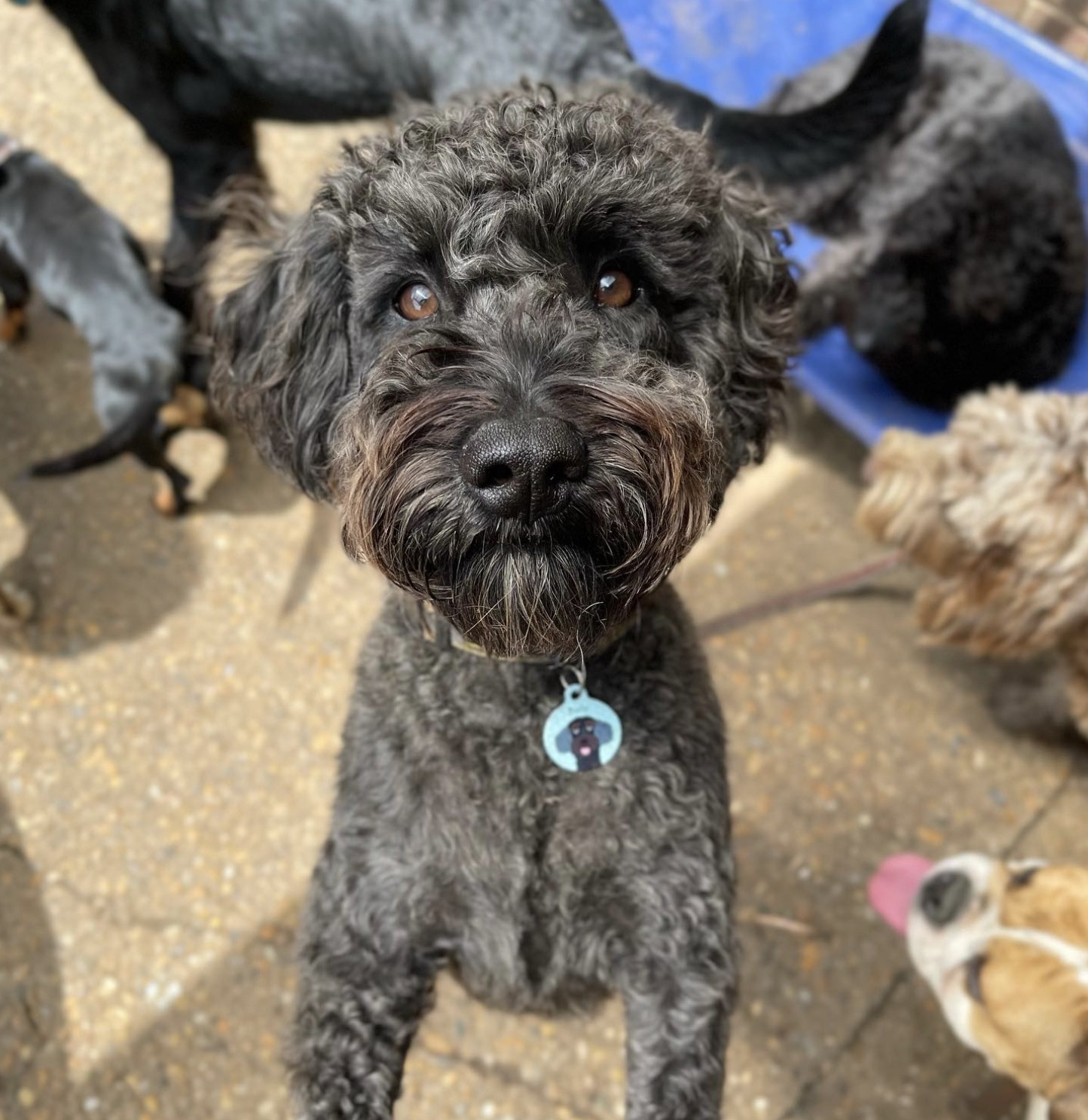
The Schnauzer Poodle Mix, otherwise known as the Schnoodle, is a cross breed dog that makes the perfect family, companion or therapy dog. Schnoodles are known for their friendly, happy and affectionate nature as well as their fluffy hypoallergenic coats that come in many different colors. It’s no surprise they are highly sought after and fetch very high prices.
If you are interested in Schnauzer Poodle Mixes keep reading this article to find out the all the answers to your questions about this dog breed!
Cover Image Credit: @bedbiscuits
Table of Contents
What Is A Schnauzer Poodle Mix Called?
A Schnauzer Poodle Mix is called a Schnoodle. They don’t have any other names like other Poodle mix breeds.
What Is A Schnoodle?
A Schnoodle is a cross between a Schnauzer and a Poodle. They come in many sizes such as toy, miniature, standard and giant and have a sturdy squarish build with a hypoallergenic coat that comes in many different colors. The most distinct feature of a Schnoodle is that they can have eyebrows and beards like the Schnauzer which sets them apart from other Poodle Mix breeds.
What Is A Teddy Bear Schnoodle?
A Teddy Bear Schnoodle is another name for a Standard size Schnoodle. It is a mixed breed designer dog breed where a Standard Schnoodle has been crossed with a Standard Poodle. Sometimes people call Schnoodles “Teddy Bear Schnoodles” because they have a fluffy, wavy coat like a teddy bear.
Read Also: Schnoodle Size Guide (Toy, Mini, Standard & Giant)

Schnoodle Origins
The precise origins of the Schnoodle are unclear as they are a relatively new breed and don’t have a comprehensive historical record like other purebred dogs.
Nevertheless, it is believed that people starting crossing Schnauzers with Poodles in the last few decades in North America. During this time, crossing a range of different dogs with Poodles was very popular however the concept of intentionally breeding two different dogs to create a new hybrid breed emerged as early as the 1980s.
Today, Schnoodles are a popular Poodle mix breed as they combine the temperament of the Schnauzer with the Poodle’s hypoallergenic coat. This hybrid breed is very suitable for people who have mild allergies as they have a low shedding coat. They are a designer dog and have only continued to gain popularity in recent years.
What Does A Schnoodle Look Like?
Schnoodles may look more like a Poodle or more like a Schanuzer depending upon the percentage mix of Poodle to Schnauzer according to the generation.
Schnoodles have a compact, square build with a soft coat with eyebrows and a beard. They come in many colors including black & white, salt & petter, white, black phantom and brown phantom.
Schnoodles also come in many sizes including toy, miniature, standard and giant depending on what size Poodle was crossed with what sized Schnauzer.
Schnoodle Coat Types
There are three main types of coats Schnoodles can have depending on the percentage make-up of Poodle to Schnauzer. These are the wavy coat, curly coat and wiry coat. Their coats can range from thick to thin and can have slightly different textures depending on the individual dog.
Wavy Coat
The wavy coat is one of the most common Schnoodle coat types. It features a gentle wave and is low to non-shedding. Wavy coats are quite hypoallergenic however curly coats are generally considered to be the most hypoallergenic. In terms of maintenance, wavy coats are generally easier to groom than curly coats.
Curly Coat
The curly coat is another common Schnoodle coat type and is generally seen in backcross generations such as F1b Schnoodles. These coats give Schnoodles more of a Poodle appearance and are generally more hypoallergenic than straight and wavy coats. These coats require more effort to maintain as they are more susceptible to matting.
Wiry Coat
Yorkie-Poos can also have wiry coats if they take more after the Schnauzer. Wiry coats are typically coarse and slightly bristly, a texture that is quite distinct from the typical Poodle mix coat. Wiry coats usually have a tousled appearance as the hair on the body is usually shorter than the hair on their face and head.
Read Also: Schnoodle Colors Guide (White, Black, Apricot, Chocolate etc.)
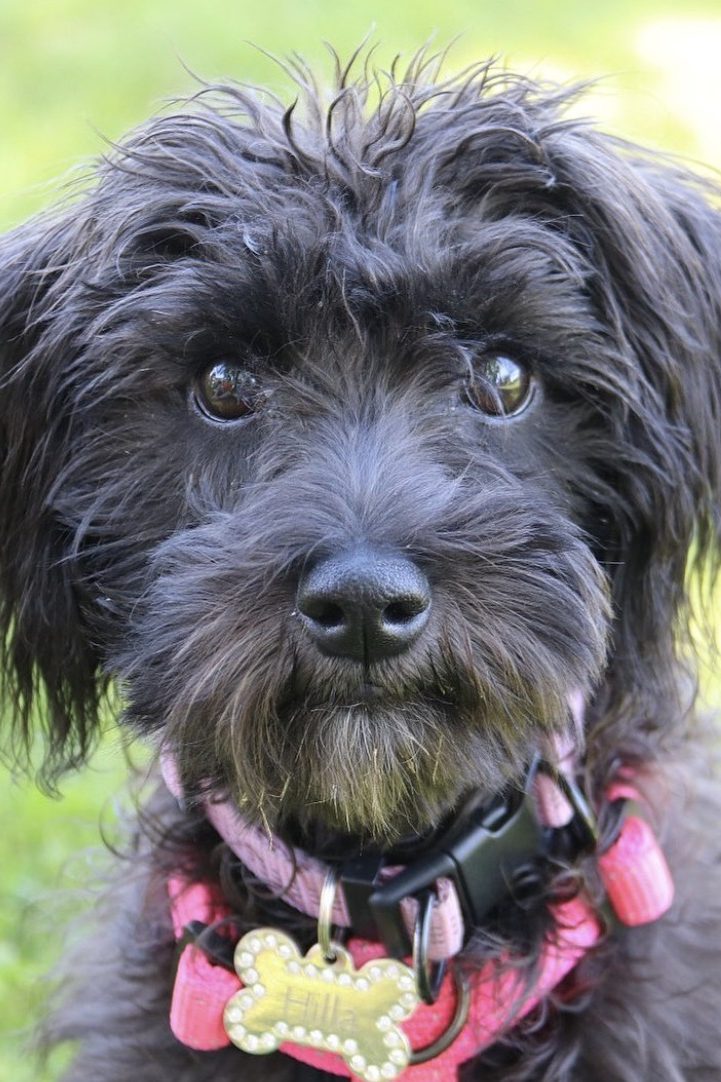
Schnoodle Coat Colors
Black Schnoodle
Black Schnoodles feature a solid black coat with jet black noses and dark blue or dark brown eyes. Black is the most common Schnoodle coat color. It is very easy to breed them as both the Poodle and Schnauzer can have black coats.
They’re created by breeding a black Poodle with a solid black Schnauzer and you can easily find Black Schnoodles in all sizes (Toy, Mini, Standard or Giant). Schnoodles can also come in bi-color black coats such as black and white.
Black and White Schnoodle
Black and White Schnoodles feature a mainly black coat with white patches on their paws and chest. They can also have white patches on their muzzle, eyes and above their eyes giving the appearance of eyebrows.
Compared to solid black Schnoodles, the black sections of a Black and White Schnoodle’s coat are much lighter. It’s better described as a pepper or dark grey color.
Black and White Schnoodles are much rarer than solid black Schnoodles but that doesn’t mean that they can’t be found. They’re created by breeding a black & white Poodle with a black & silver or salt & pepper Schnauzer.
White Schnoodle
White Schnoodles are created by breeding a white or cream Poodle with a white Schnauzer. Schnauzers can come in white however it is not an AKC (American Kennel Club) recognized coat color meaning that they can’t be shown. Nevertheless, white is a recognized coat color by the World Canine Organization.
White Schnoodles are almost always toy or miniature sized as White Schnauzers are virtually always Miniature Schnauzers. White Standard and White Giant Schnauzers are extremely rare. You can get larger sizes of Schnoodle in white coats however they are usually later generations or cross back generations that have a higher percentage of Poodle genes as they would have to inherit the white coat from the Poodle.
One draw back of having a white Schnoodle is that you have to constantly wash them as their coats can get dirty really quickly. They are also likely to get food stains around their mouths and tear stains around their eyes, turning the fur in those areas a light brown color.
Apricot Schnoodle
Apricot Schnoodles have very light red coats with a peachy tone. They usually have black or dark brown noses and dark brown eyes.
Apricot Schnoodles are much rarer than black or white Schnoodles as Schnauzers are famous for having darker colored coats. They’re usually found in later generation or back-cross generation litters as the gene for Apricot needs to be inherited from the Poodle side.
Don’t confuse an Apricot Schnoodle with a Red Schnoodle as Red Schnoodles have much darker red coats.
Chocolate Schnoodle
Chocolate Schnoodles feature a solid dark brown coat. Their noses and eyes are dark or light brown. Chocolate Schnoodles are rarer than black or white Schnoodles as Schnauzers are famous for having darker colored coats.
They’re usually found in later generation or back-cross generation litters as the gene for brown coats needs to be inherited from the Poodle side.
Phantom Schnoodle
Phantom Schnoodles have a coat with a solid background and patches of a secondary color in very specific locations. These locations include the chin, throat, chest, legs, beneath their tail, above their eyes or on the sides of their muzzle.
Phantom Schnoodles are different from Parti Schnoodles as Parti Schnoodles can have patches anywhere on their body whereas the phantom coat is clearly defined. In most cases Phantom Schnoodles have a black background with tan patches on their muzzle, legs, chest, tail and above the eyes.
Blue Merle Schnoodle
A Blue Merle Schnoodle has a blue, grey, white and tan coat in a distinct mottled pattern. They would have originally had a solid black coat but the merle gene diluted it into other shades. The merle gene also affects eye color and skin pigmentation on the nose and paws. This means that Merle Schnoodles often have light eye colors like blue and often have pink patches on their nose and paws.
Blue Merle Schnoodles are extremely rare as it is not an officially recognized color for the Schnauzer or Poodle. Merle was not originally in the gene pool of either parent breed but it has been introduced from other breeds which is how the Schnoodle can get this coloring.
Red Schnoodle
Red Schnoodles have a dark red or ruby coat. They have dark brown eyes and dark brown or black noses. Red Schnoodles are very rare as the coat color can only be inherited from the Poodle and red Poodles are rare to start with.
It’s very unlikely that you’d find a Red Schnoodle from your local breeder. You are much more likely to find red coats in other Poodle mix breeds such Cavapoos or Goldendoodles.
Read Also: Schnoodle Size Guide (Toy, Mini, Standard & Giant)

Schnauzer Poodle Mix Size
Toy Schnauzer Poodle Mix
A Toy Schnauzer Poodle Mix is a hybrid breed dog, resulting from crossing a Miniature Schnauzer with a Toy Poodle. Toy Schnoodles are the smallest size of this breed.
Toy Schnoodles get to a height of 10 to 12 inches (25.4cm to 30.5cm) at the shoulder when fully grown and weigh between 4 and 10 pounds (1.8kg to 4.5kg).
Miniature Schnauzer Poodle Mix
A Miniature Schnauzer Poodle Mix is a cross between a Miniature Schnauzer and a Miniature Poodle. Mini Schnoodles are the second smallest size of this breed. In comparison to Toy Schnoodles, Mini Schnoodles have a sturdier build and are slightly taller.
Mini Schnoodles get to the height of 12 to 15 inches (30.5cm to 38.1cm) at the shoulder when fully grown and weigh between 10 and 20 pounds (4.5kg to 9.1kg).
Standard Schnauzer Poodle Mix
A Standard Schnauzer Poodle Mix is a cross between a Standard Poodle with a Standard Schnauzer.
They get to a height of 15 to 20 inches (38.1cm to 50.8cm) tall at the shoulder and weigh between 20 and 60 pounds (9.1kg to 27.2kg) when fully grown.
Giant Schnauzer Poodle Mix
A Giant Schnauzer Poodle Mix is a cross between a Standard Poodle and a Giant Schnauzer. They are the largest version of the Schnoodle breed.
A fully grown Giant Schnoodle gets to the height of 20 to 28 inches (50.8cm to 71.1cm) at the shoulder and weighs between between 60 and 85 pounds (27.2kg to 38.6kg).
Schnoodle Full Grown
When Is A Schnoodle Full Grown?
The age a Schnoodle is fully grown depends on their size.
- Toy Schnoodles reach their full adult size between 6 and 7 months of age.
- Mini Schnoodles are fully grown between 7 and 10 months of age.
- Standard Schnoodles are fully grown between 11 and 13 months of age.
- Giant Schnoodles are fully grown between 12 and 18 months of age.
Once your puppy is fully grown you’ll need to start investing in dog products that you’ll keep for their whole life such as:
- A full size dog crate so they have their own cozy den to sleep in – consider a dog crate pad to make it that much comfier!
- An adult sized dog raincoat to keep them dry during wet weather
- An adult sized dog life jacket to help with swimming in lakes and oceans
- An adult sized dog jacket for cold winter weather
- A dog cooling vest if you live in a hot climate
- High quality no-pull dog harness to reduce stress on their neck while walking
- And other similar products
Read Also: Schnoodle Generations Guide (F1 vs F1b vs F2)

Schnoodle Temperament
The temperament of a Schnauzer Poodle Mix can vary depending on many factors such as the percentage mix of Poodle to Schnauzer, their level of socialization, their environment as well as what training they have undergone.
Overall, Schnoodles are a loyal, happy and affectionate companion dog. They love spending time with their family whether that is playing a game, exercising or just watching TV. Schnoodles often choose favorites in family groups which is a trait they inherit from the Schnauzer. They generally love everyone but make it obvious who they prefer which is generally the person who feeds them.
They are also very protective and alert, a trait that they have inherited from their Schnauzer heritage, which can make them good watchdogs. Unfortunately, they have a reputation for barking however this negative trait can be trained out of them at a young age.
Schnoodles are also known to really like digging – they are a terrier mix breed after all! Give them lots of toys and things to do each day to avoid any destructive behavior like this.
Most Schnoodles are very intelligent which makes them pretty easy to train. Both the Schnauzer and the Poodle are intelligent breeds which makes the Schnoodle a fast learner.
Are Schnoodles Good Family Dogs?
Schnoodles are good family dogs as they are friendly, playful and affectionate. They are generally very gentle and patient with children if they have been properly socialized and trained. They also tend to form very strong bonds with kids and are quite protective of them.
Schnoodles also thrive off companionship so they really like being a in family setting. They really like to get involved in family activities and are loyal, loving companions that provide emotional support and comfort to their owners.
Do Schnoodles Bark A Lot?
How much a Schnoodle barks really comes down to the individual Schnoodles. Some bark a moderate amount while others can bark excessively. There are many factors that influence a Schnoodle’s tendency to bark including genetics, socialization, separation anxiety, lack of exercise or lack of mental stimulation. They inherit this trait from their Schnauzer parent.
If barking does become an issue, it’s best to firstly try to retrain your dog out of the habit with positive reinforcement techniques. If this doesn’t work, try distracting them from their barking triggers with toys. Look for boredom-busting dogs toys such as ones you can hide treats inside. Other options include using ultra-sonic sound devices.
Do Schnoodles Like To Cuddle?
Most Schnoodles love to cuddle. They are known for their friendly and affectionate nature and are also very people-oriented so cuddling comes naturally to them. They thrive on human companionship and as much as they love running around and being active, they equally love snuggling with their loved ones.
Do Schnoodles Have Separation Anxiety?
Schnoodles can suffer from separation anxiety if they are left alone for long periods of time. During this time, they may bark, pace, be destructive or attempt to escape.
Luckily, you can manage separation anxiety by gradually getting them used to being alone for longer periods of time. You can do this by starting with short periods of being alone and slowly increasing the time or you can create a comfortable and safe space for them to be left when you leave the house. This may be a den-like environment like a crate with blankets and their favorite toys.
Are Schnoodles High Energy?
Schnoodles can be a high energy dog. They need between half and hour and an hour of exercise each day to manage their energy levels. Schnoodles love to run, go on walks and play fetch and should be given the opportunity to do a mixture of these activities each week. If not, they can become bored and destructive.
When Do Schnoodles Calm Down?
Schnoodles can be very active and highly demanding as a puppy and young dog however they do calm down as they mature into adult life. Around 3 years of age is when most Schnoodles usually start to calm down however others take longer, calming down around 4 years of age.
Read Also: Schnoodle Lifespan Guide – How Long Do Schnoodles Live?

Schnoodle Lifespan
How Long Do Schnoodles Live?
The average Schnoodle lives for 10 to 16 years. There are many factors that affect the lifespan of a Schnoodle including size, gender, generation and whether they are desexed or intact. These variables mean they can have shorter or longer lifespans than the average.
You can give a Schnoodle the best chance of living a long life by exercising them daily, giving them healthy food and keeping on top of vet appointments.
Schnauzer Poodle Mix Price
How Much Are Schnoodle Puppies?
Schnoodle puppies cost between $1500USD and $4000USD depending on the breeder. Smaller sizes of Schnoodles generally sell for more than larger sizes like Standard Schnoodles or Giant Schnoodles.
This is because there is higher demand for smaller sized dogs at the moment as they are considered cuter and are also more suited to urban living in an apartment.
A great way to keep up to date on current Schnoodle puppy prices is to regularly check dog breeder advertising websites like PuppySpot!
Schnoodle Puppies
If you are looking for a Schnoodle breeder, consider PuppySpot where you can use our discount code PUPPY300 for $300 dollars off any dog! Check out the adorable Schnoodle puppies that are currently available here!
PuppySpot is dog advertising website based in the US that connects breeders with prospective pet parents. They screen and vet every breeder on an annual basis to make sure their puppies are of top quality as they have a zero tolerance policy for puppy mills and substandard breeding practices of any kind. They also offer various trusted, USDA-certified transportation options to deliver your puppy to your home safely. You can check out their current Schnoodle litters here.
Schnoodle Generations
As a cross breed, there are many different ways that breeders can mix Schnauzers and Poodles to alter the genetic make up of the Schnoodle. The most common Schnoodle generations are F1, F1b and F2.
F1 Schnoodle
An F1 Schnoodle is the first generation of the breed created by crossing a purebred Schnauzer with either a purebred Toy, Miniature or Standard Poodle. An F1 Schnoodle is 50% Schnauzer and 50% Poodle.
F1b Schnoodle
An F1b Schnoodle is created by crossing an F1 Schnoodle with a purebred Poodle that is either Toy, Miniature or Standard sized. The resulting dog is 25% Schnauzer and 75% Poodle.
F2 Schnoodle
An F2 Schnoodle is the second generation of the breed created by breeding an F1 Schnoodle with another F1 Schnoodle. They are 50% Schnauzer and 50% Poodle. F2 Schnoodles have less hybrid vigor than F1 Schnoodles.
Read Also: Schnoodle Generations Guide (F1 vs F1b vs F2)
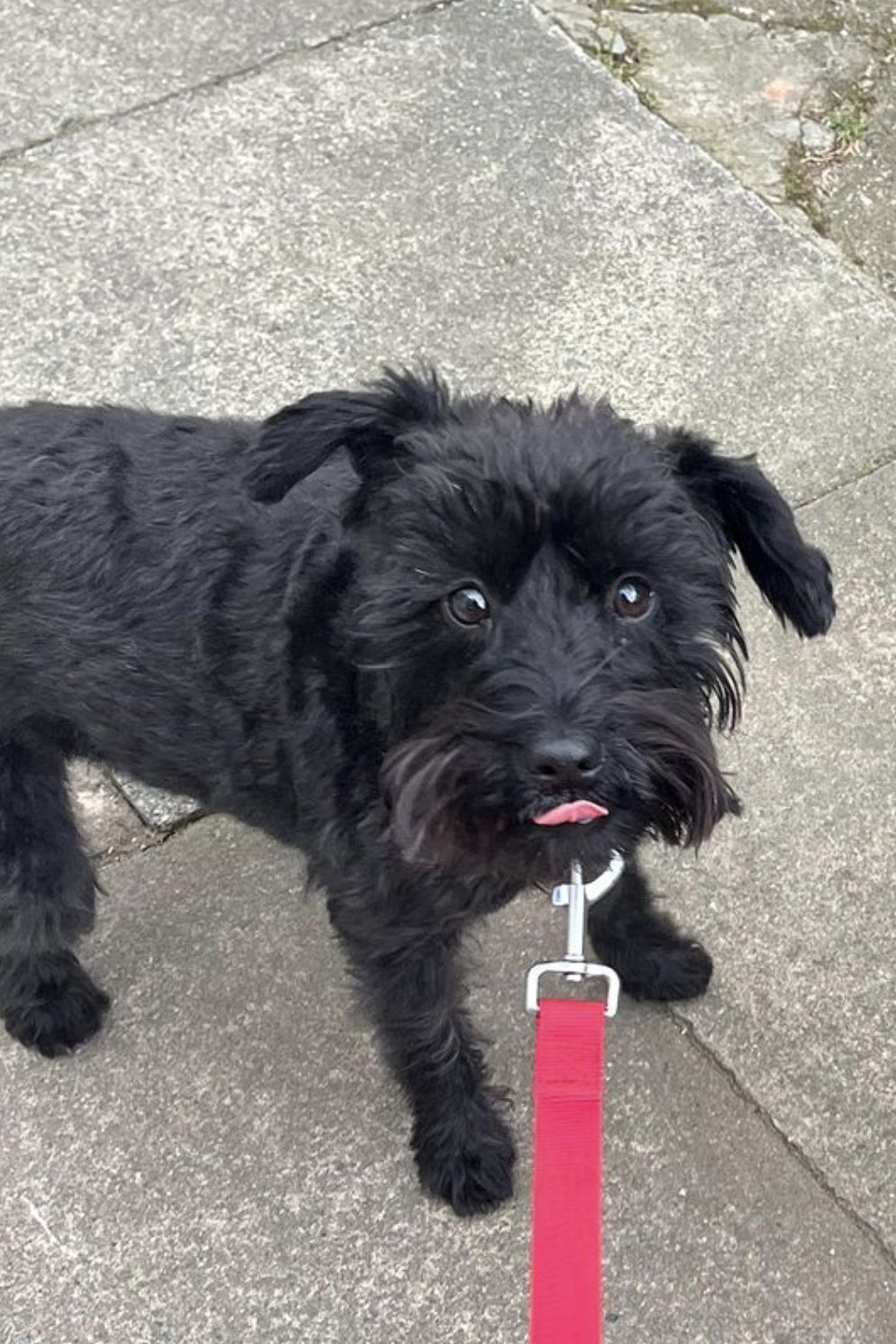
Schnoodle Shedding
Do Schnoodles Shed?
Schnoodles do not shed much at all and are classified as low shedders. Both the Poodle and the Schnauzer are light shedders, so it is not a surprise that their puppies also have this trait.
It is important to note that no dog can be totally non-shedding and a Schnoodle is one of the breeds that comes very close to that definition.
The best way to reduce the amount that your dog sheds is to regularly brush them. Slicker brushes are great for dogs with single coats and deshedding tools are great for dogs with double coats.
Are Schnoodles Hypoallergenic?
Schnoodles are classified as a hypoallergenic breed as they are low shedders and produce a minimal amount of dander. Both the Poodle and the Schanuzer are hypoallergenic so all Schnoodles, no matter the generations (F1, F1b etc.) are hypoallergenic.
You can make your dog even more hypoallergenic by keeping up a good grooming routine as it will stop them from releasing allergens into your home.
Your dog’s grooming routine should include both brushing and bathing. A brush down with a slicker brush every other day is ideal to remove any loose hairs. As for washing, a bath with a gentle dog shampoo every 3 months will remove dead skin cells, dirt and debris.
This may not seem that often but you don’t want to over wash your dog otherwise their coat will dry out which will only cause flaky skin which is an allergy irritant.
Read Also: Toy Schnauzer Guide: Size, Weight, Lifespan, Temperament etc.
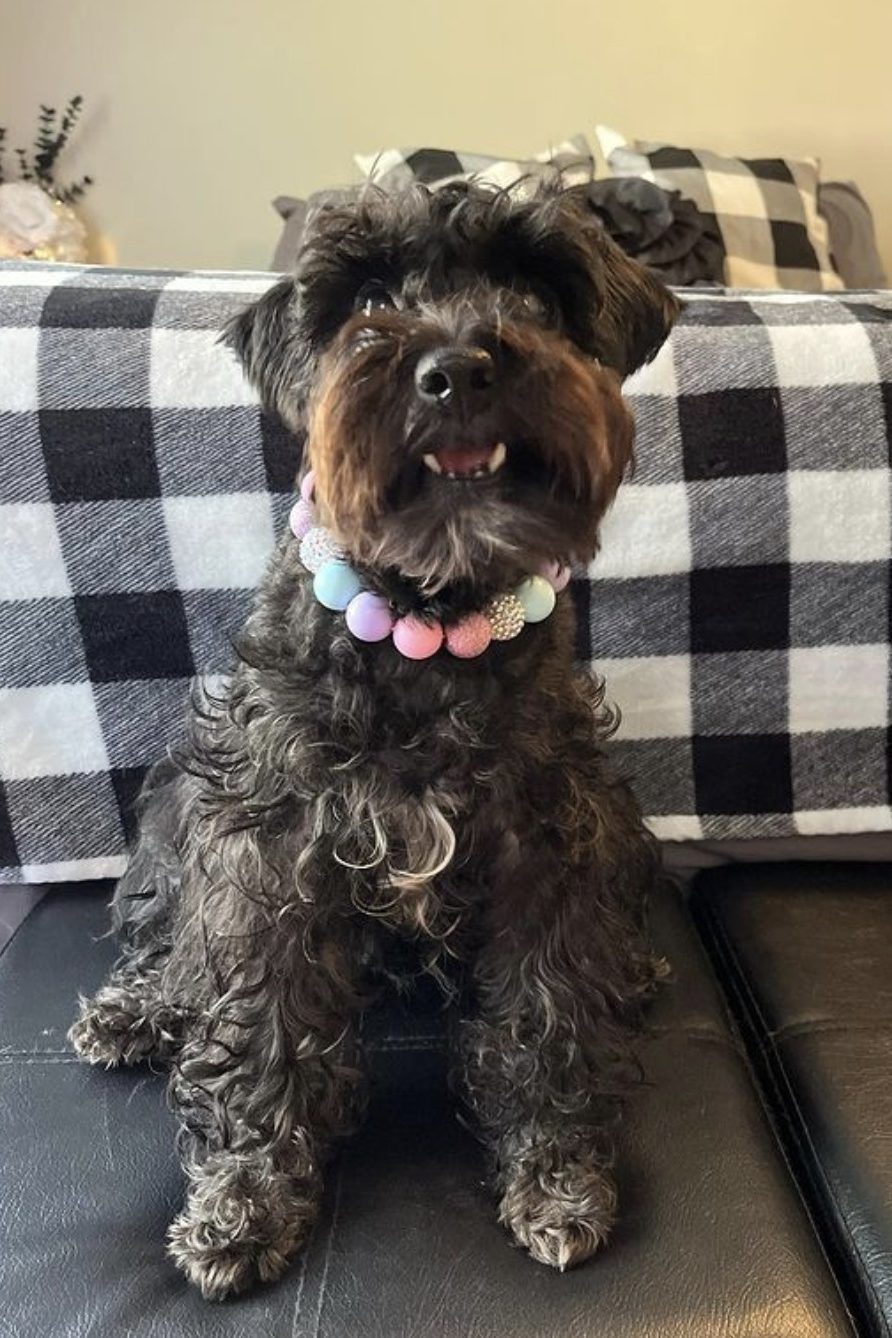
Mini Schnoodle via @victoriangirl_and_her_pup
Male vs Female Schnoodle
Male Schnoodles or Female Schnoodles are not inherently better than one another however there are slight differences between the two.
In terms of size, Male Schnoodles are generally slightly taller and heavier than Female Schnoodles however as they are such as small breed, the size differences are quite negligible.
In terms of temperament, Male Schnoodles are generally more easy going and laid back while Female Schnoodles are more independent and strong-willed. Females are generally more assertive and dominant than males.
Nevertheless, there are many other factors that play into temperament so just because a Schnoodle is a certain gender, it does not mean that they will behave in a certain way.
Exercising A Schnoodle
How Much Exercise Does A Schnoodle Need?
The recommended length of daily exercise for Schnoodles is between 30 minutes and 1.5 hours which can be split over 1 to 3 periods of exercise. Smaller Schnoodles may not need as much exercise as a larger Schnoodle sizes. Schnoodle puppies require significantly less exercise. The general rule is that puppies should get 5 minutes of exercise per month of age.
There are many ways that you can exercise a Schnoodle such as going on walks, having playtime with other dogs, playing short games of fetch, doing some obedience training or playing tug-o-war with a pull toy. These activities are generally safe for both Schnoodle puppies and adult Schnoodles. Adult Schnoodles also like to run and go on long hikes however these activities should not be done until your Schnoodle has fully developed and stopped growing otherwise they can get joint and bone problems.
Schnoodles also need to partake mental exercise such as obedience training and brain games which is why many people get their Schnoodle’s interactive puzzle toys or Kong chew toy which they can stuff with treats like peanut butter.
Feeding A Schnoodle
How Much Should A Schnoodle Eat?
How much you should feed a Schnoodle depends on their size, age, metabolism, health and activity levels. An adult Schnoodle should be fed two meals a day while Schnoodle puppies should be given meals more frequently depending on their age.
Many people opt to use smaller puppy bowls with non-slip food mats as puppies tend to be messy eaters. The pet food mat will prevent food from being spilt everywhere and also stop the bowl from slipping around and tipping over. A lot of puppies also become overly excited about food and eat way too fast which can cause indigestion and choking so it’s not a bad idea to train them out of this habit with a slow feeder dog bowl.
Most adult Schnoodles consume roughly 1 to 4 cups of food everyday however this depends on their size, health and activity levels. This is usually split into one meal in the morning and one meal at night. Again, you should seek advice from your veterinarian for specific diet recommendations for your Schnoodle.
Schnoodles should also have access to clean water at all times so they can stay hydrated. Some people like to use dog water fountains if they have the tendency to forget to change water regularly.
Read Also: Schnauzer Size Comparison (Miniature vs Standard vs Giant)
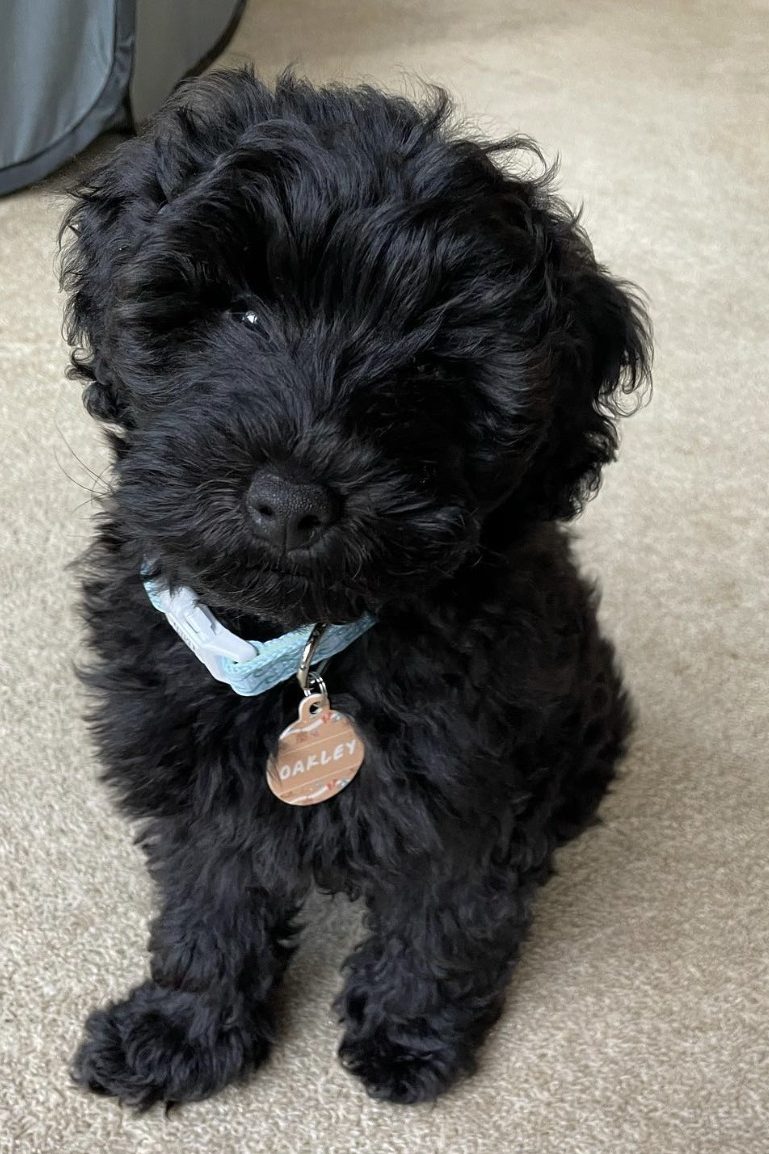
Schnoodle Training
Are Schnoodles Easy To Train?
Schnoodles are relatively easy to train as they are very intelligent. You should start teaching your Schnoodle basic commands such as their name, sit, stay and come from the moment they arrive home. You can then progress to more difficult tricks and commands.
When training your dog it is important to use positive reinforcement techniques as dogs repeat good behavior when it is followed by a reward such as a treat or their favorite toy. Clicker training is another type of positive reinforcement training that is a good method for learning new tricks. You use a clicker device so your dog can associate a new behavior with a click and then a reward.
Schnoodle Grooming
How Often Do Schnoodles Need To Be Groomed?
Schnoodles need to be groomed every 6 to 12 weeks. If you prefer that your Schnoodle has a shorter coat they need to be groomed every 6 to 8 weeks. If you prefer a longer coat, they can be groomed every 8 to 12 weeks. During this time they should get a haircut, wash and a nail trim.
This can be done at a professional groomer or you can learn how to cut your dog’s hair at home from watching YouTube videos and investing in a dog grooming kit.
How Often Should Schnoodles Be Bathed?
Generally, Schnoodles should be bathed every 4 to 8 weeks however they should not be bathed any more frequently otherwise they will get dry, flaky skin as all the natural oils will be stropped from their skin.
Nevertheless, if your Schnoodle leads a very active outdoor lifestyle where they swim or get dirty, they may need to be washed more frequently.
How Often Should You Brush Your Schnoodle?
You should brush your Schnoodle at least weekly to prevent tangles and matting and also reduce shedding. If your Schnoodle has a curly coat, they will have to be brushed much more frequently than ones with wavy or wiry coats.
If you can, try to brush your Schnoodle daily or every second day as it is much better than doing it weekly. Slicker brushes are perfect for Schnoodles as they have a single coat.
Schnoodle Haircuts
Schnoodles need to get haircuts as they have a coat that continues to grow and can easily become matted. The length you cut a Schnoodle’s hair comes down to personal preference.
Some people prefer longer coats while others like shorter ones as they are better for warmer climates. You can either go to a professional groomer or learn how to cut a Schnoodle’s hair from the internet and invest in a DIY dog grooming kit.
There are many different haircuts that you can give your Schnoodle. Some popular ones include the:
- Puppy Cut
- Teddy Bear Cut
- Poodle Cut
- Summer Cut
Read Also: Schnoodle Size Guide (Toy, Mini, Standard & Giant)
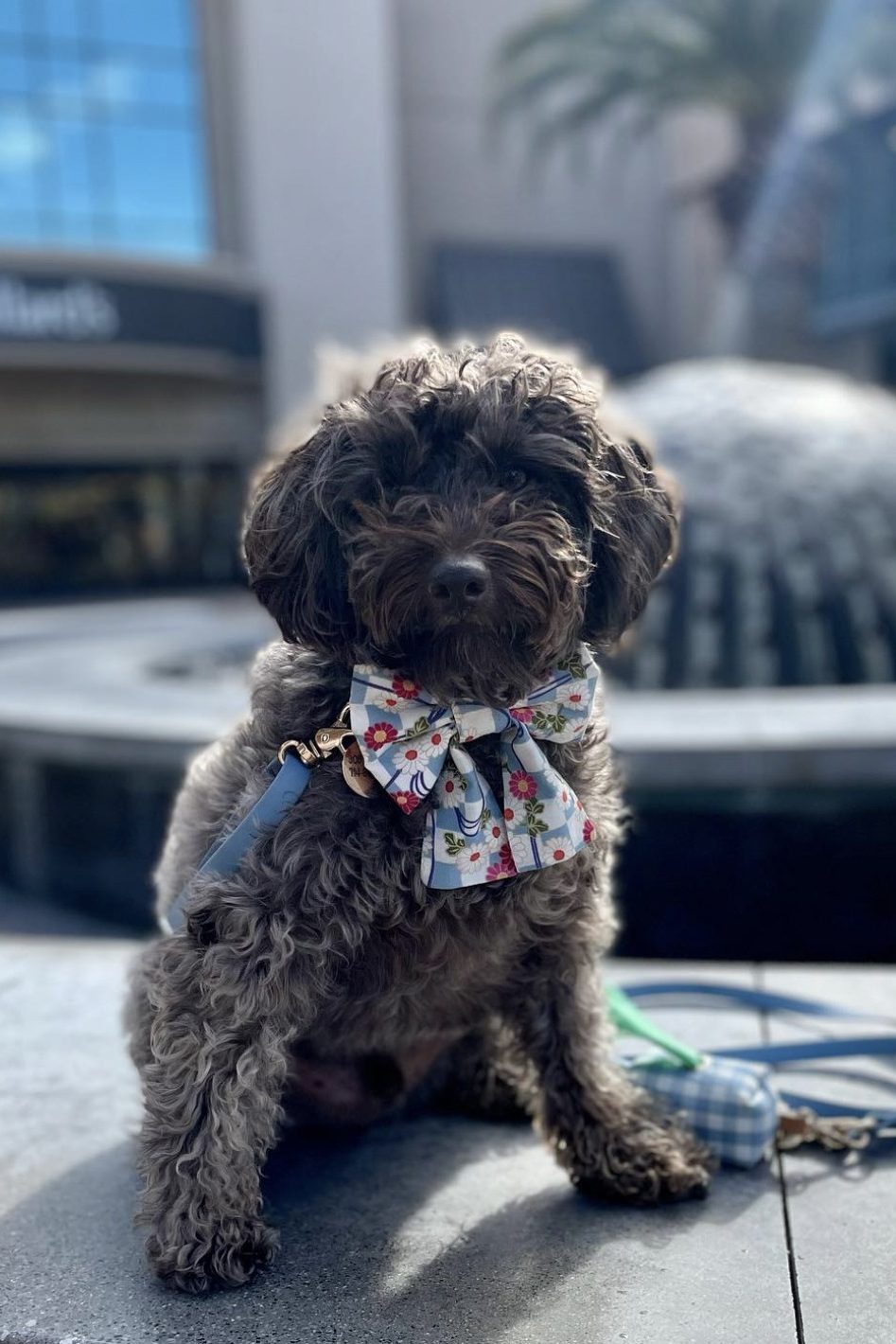
What Are The Downsides Of Schnoodles?
While Schnoodles are a lovely dog breed with many positive traits, they do have some downsides like any other dog breed.
1. Very Expensive
Schnoodles are very expensive to adopt and are also expensive to own. Like lots of other Poodle Mix breeds, Schnoodles cost thousands of dollars. Luckily, you can use our discount code PUPPY300 for $300 dollars off a Schnoodle from PuppySpot!
2. Grooming Requirements
Schnoodles, like all Poodle mixes, are high maintenance in terms of grooming. This is not only time consuming but can also be very expensive if you choose to go to professional groomers. Luckily, you can keep these costs down by investing in a DIY dog grooming kit.
3. Barking
Schnoodles like other medium sized dogs are prone to barking. They have quite a high pitched bark which can be irritating at times however they can luckily be trained out of excessive barking.
Poodle Mix Breed Comparisons
There are many breeds that are very similar to Goldendoodles. In terms of size and energy, Cavapoos and Cockapoos are quite similar.
Labradoodles, Aussiedoodles, Bernedoodles and Sheepadoodles are also similar however they are much larger than the Mini Schnoodle and some Standard Schnoodles. Much smaller poodle mix breeds include Maltipoos and Yorkie-Poos which have a similar hypoallergenic coat but a very different temperament.
Further Reading
- Schnoodle Generations Guide (F1 vs F1b vs F2)
- Schnoodle Size Guide (Toy, Mini, Standard & Giant)
- Schnoodle Colors Guide (White, Black, Apricot, Chocolate etc.)
- Schnoodle Lifespan Guide – How Long Do Schnoodles Live?
- Mini Schnoodle Guide: Size, Price, Lifespan & Temperament
- Toy Schnauzer Guide: Size, Weight, Lifespan, Temperament etc.
- Teacup Schnauzer Guide – The Truth About This Tiny Breed.
- Schnauzer Size Comparison (Miniature vs Standard vs Giant)
Our Top Picks: Must Have Dog Products!


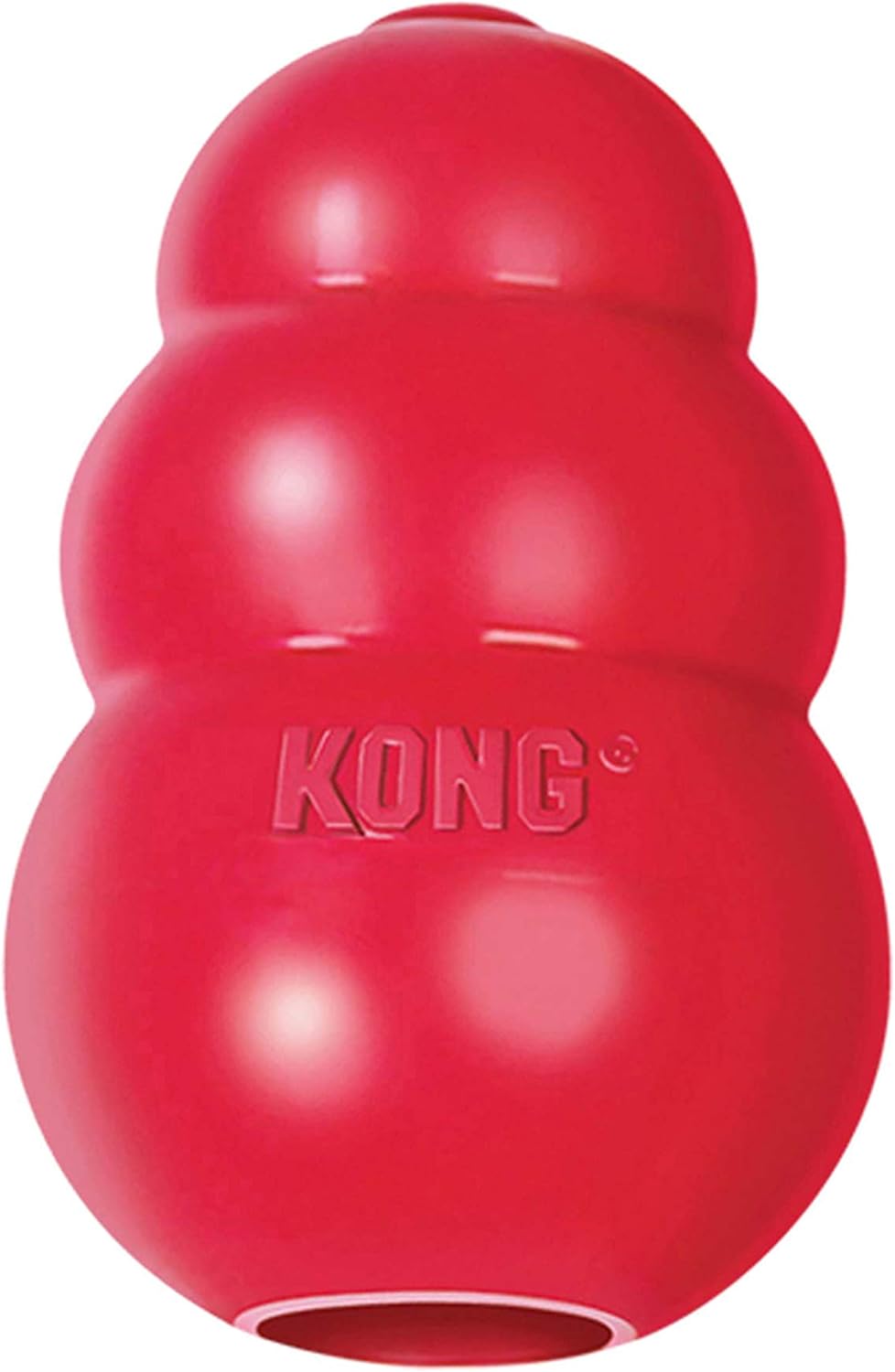

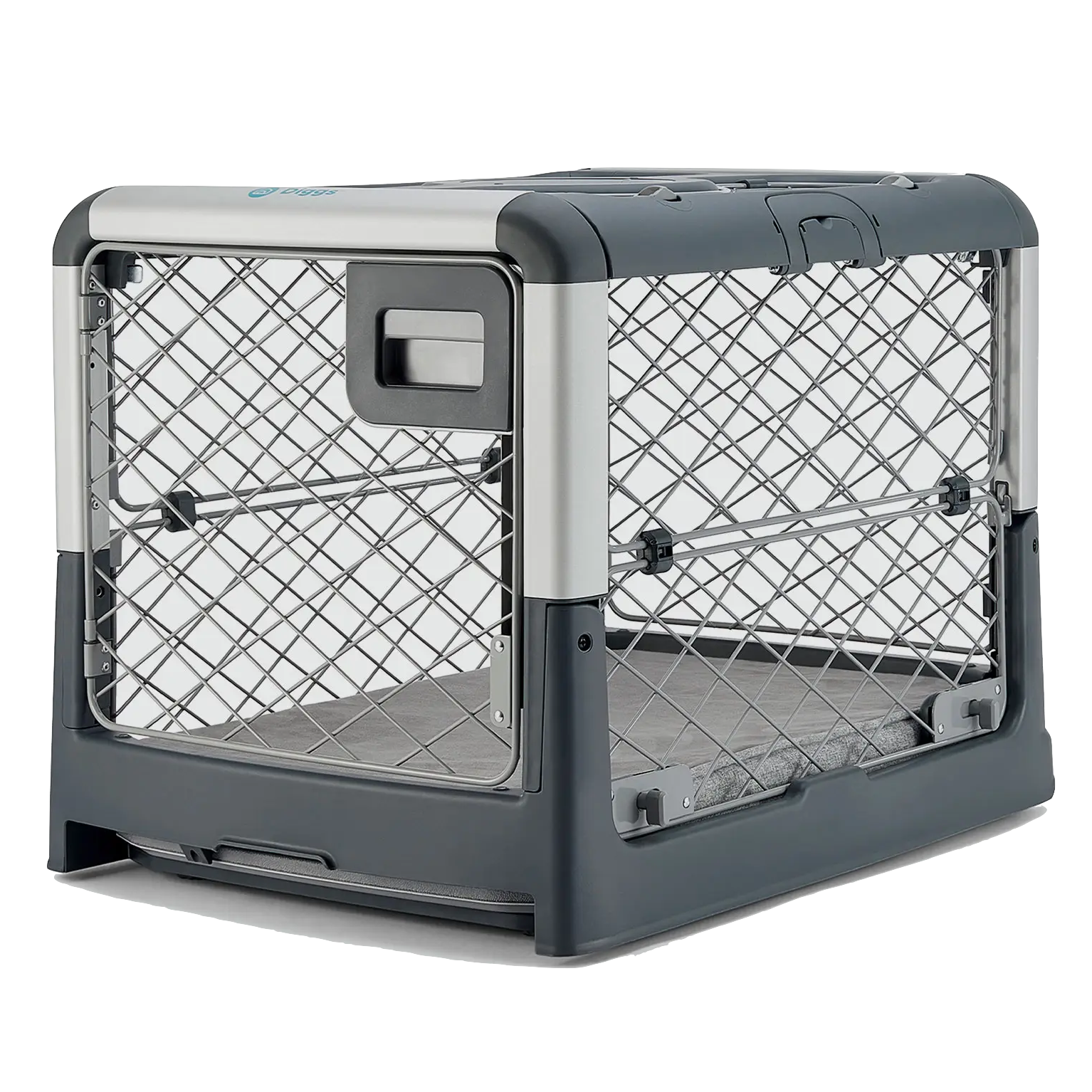
What's Your Reaction?
Sophie Hamilton is the founder of PupTraveller. She is a dog expert with over 5 years experience in the pet industry where she has researched and written over 400 articles about dogs. Sophie is the go-to resource for dog owners and hopes to share her extensive knowledge of dogs with PupTraveller’s readers.




